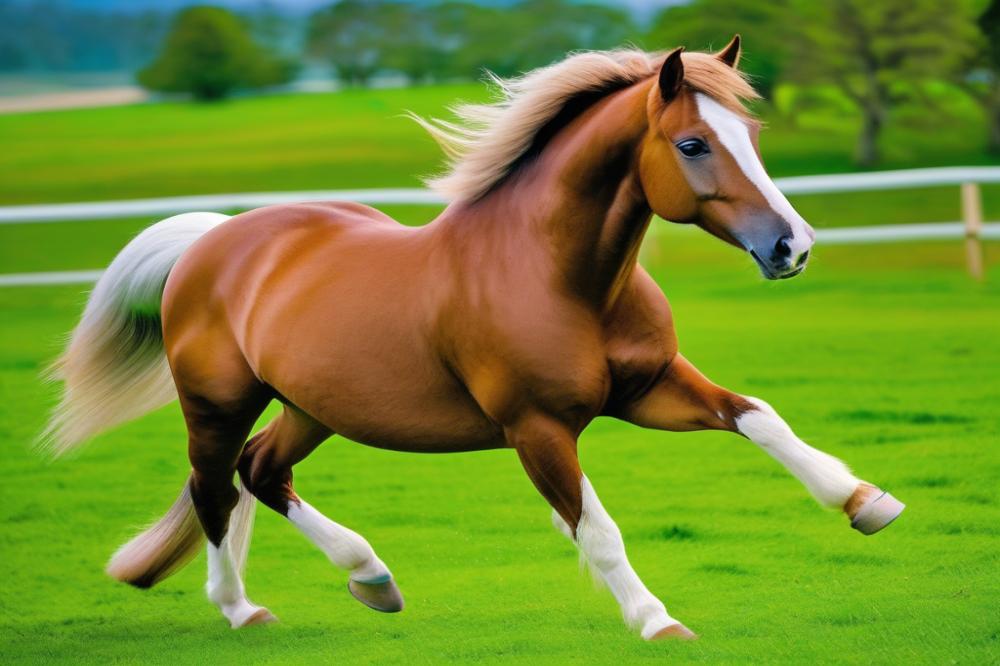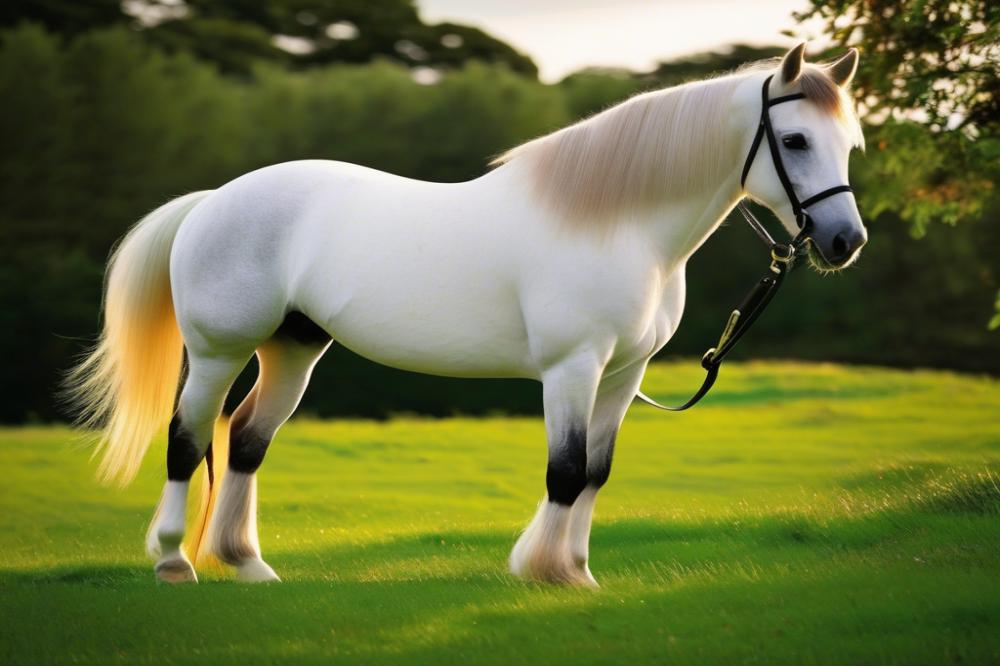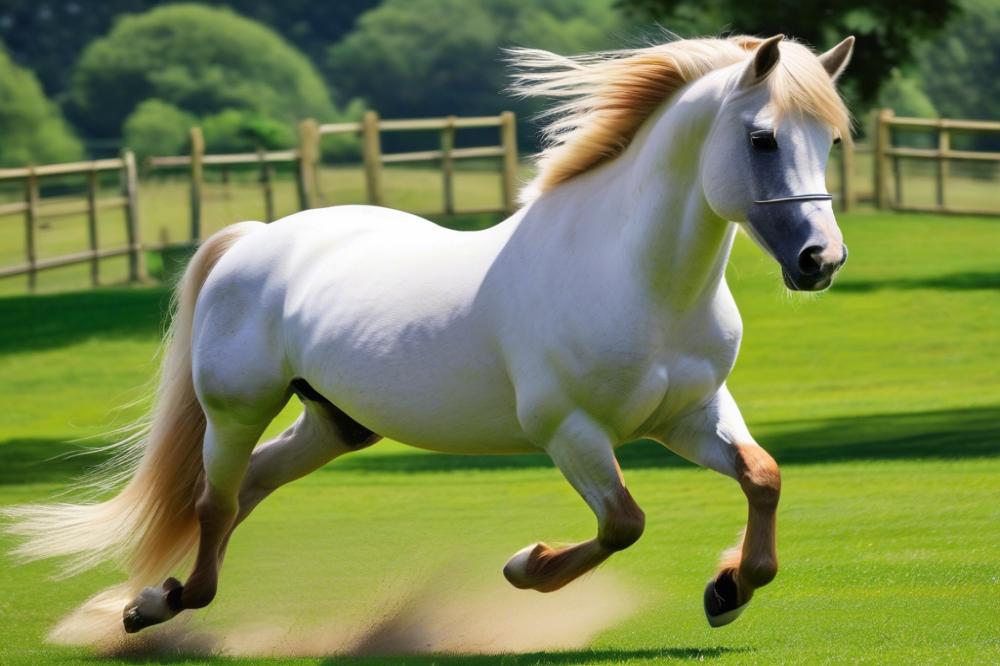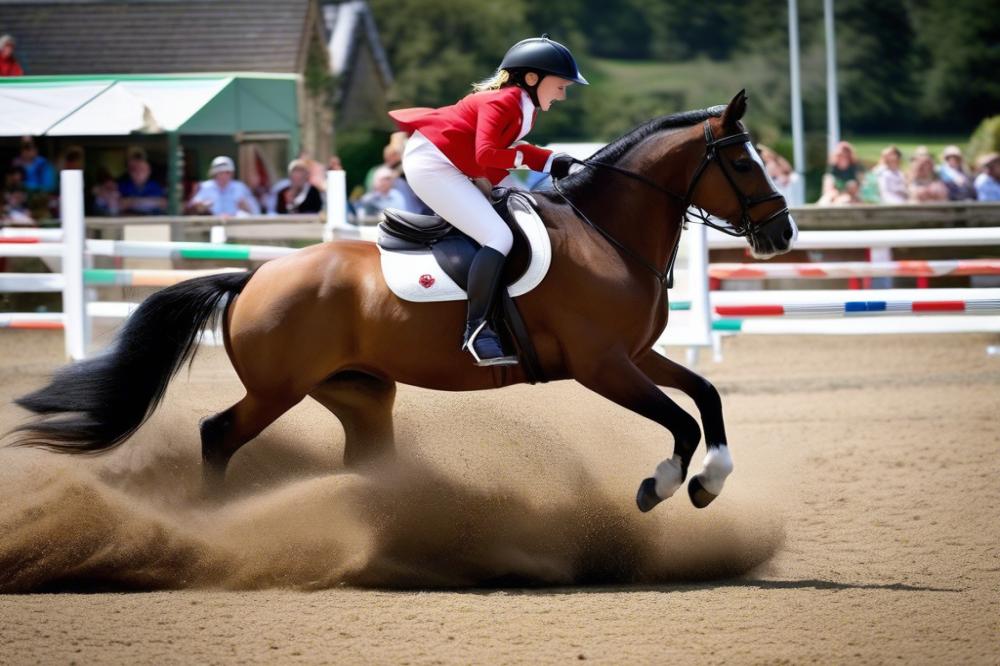Introduction
Welsh ponies are well-regarded for their size, strength, and spirited nature. They stand out in the pony world and play a vital role in various activities. In Gymkhana Events, their agility and speed become essential. Riders often find these ponies responsive, making them perfect companions for both novice and experienced equestrians.
Attending a gymkhana requires more than just hopping on a pony. Techniques must be honed through practice and determination. Riders need to develop skills that enhance communication with their equine partners. Effective steering, timing, and balance can make all the difference in races. Each event tests the rider’s ability to navigate obstacles while demonstrating control and confidence.
Success in Gymkhana Events does not happen by chance. It comes from understanding the dynamics of riding and the temperament of the horse. A well-trained rider can harness the pony’s energy to achieve remarkable results. Knowing how to encourage speed while maintaining safety is crucial. Riders must remember that every event is an opportunity to improve, not just win.
As riders prepare for gymkhana events, they foster a special bond with their ponies. This connection enhances performance and builds trust. With proper training and preparation, both pony and rider can shine in their unique way. The key lies in practice, patience, and a willingness to learn from each experience.
Understanding the Welsh Pony

Characteristics of Welsh Ponies
Welsh ponies are known for their compact and sturdy build. They usually stand between 12 to 14.2 hands tall, making them the perfect size for young riders. Their muscular frames and thick manes add to their charming appearance. High energy levels define their nature. Moreover, they have a spirited personality, which appeals to many equestrians. Despite their energetic demeanor, they are often gentle and easy to handle, making them popular among riders of various skill levels.
Suitability for Gymkhana Games
These ponies excel in gymkhana events due to their agility and speed. They can quickly navigate through obstacles and execute sharp turns. Their nimble movements contribute to a harmonious riding experience. A Welsh Pony’s trainability further enhances their effectiveness in competitive settings. Many riders find that their willingness to learn makes preparation for events much more enjoyable. As a result, they can tackle various games with confidence and skill.
Unique Traits to Consider for Effective Riding
Riders should note that these ponies often possess a strong sense of character. Building a bond with them is vital. This strong connection promotes trust and cooperation during competitions. Understanding their quirks can lead to better performance in gymkhana. Some may have a playful side that requires a patient approach. Their enthusiasm can also mean needing consistent training sessions. Overall, appreciating the blend of energy and gentleness leads to more successful partnerships in the arena.
Fundamental riding techniques

Posture and Balance While Riding
Maintaining a correct posture is crucial when riding for gymkhana events. The rider’s back should be straight, allowing for free movement. Balance plays a key role as well. A centered position helps in making quick turns and sudden stops. Both feet should rest firmly in the stirrups. This provides stability and control when performing tasks. Leaning too far forward or backward can throw off the alignment.
Furthermore, keeping the knees softly closed around the pony is necessary. This subtle grip helps maintain a connection without restricting the pony’s movement. A rider must also remember to relax their shoulders. Tension in this area can affect balance, causing difficulties in precise maneuvers.
Use of Aids for Communication with the Pony
Aids are essential tools for effective communication during an event. The rider’s legs, hands, and voice make up the primary aids. The legs signal when to move forward or to increase speed. Meanwhile, hands control direction and speed through the reins. Using these aids harmoniously is vital for clear guidance.
Voice commands can complement physical signals. Simple words like “walk,” “trot,” or “whoa” can help reinforce instructions. Timing is important here; commands should align with the pony’s rhythm. Overuse of aids may lead to confusion. Therefore, practicing subtle corrections allows for better responses.
Importance of Rhythm and Timing in Gymkhana Events
Rhythm is the heartbeat of all riding disciplines, especially in gymkhana. Engaging with the pony in a rhythmic pattern enhances teamwork. Each task requires a blend of movement and pace that matches the pony’s stride. Timing becomes equally critical when approaching obstacles. For instance, knowing when to push for speed or pull back can make all the difference.
A smooth rhythm creates a fluid flow. This allows the rider to navigate through tasks with greater ease. Anticipating the next move is part of mastering this art. Learning to feel the pony’s movements requires practice and attentive listening. Gaining this awareness contributes to a successful performance in events.
Ultimately, mastering posture, communication, and rhythm will prepare any rider for the challenges ahead. Each element builds upon the last, forming a solid foundation for gymkhana success.
Grooming and pony care

Daily grooming routines for a Welsh Pony
Grooming plays a crucial role in keeping your pony healthy and happy. Each day should begin with a thorough brush-down. Start with a curry comb to loosen dirt and debris from the coat. Next, use a stiff brush to remove the dirt and a soft brush for the sensitive areas like the face and legs. Pay attention to the mane and tail; a wide-toothed comb can help prevent breakage while detangling. Regular hoof picking is also essential. Clean each hoof to remove stones or debris that could cause discomfort.
After grooming, check for any cuts, scrapes, or signs of irritation. Keeping an eye out for small issues can prevent larger problems down the line. Make grooming a bonding experience. Speak softly to your pony and reward with a treat afterward.
Best practices for pony care and health
General health care is just as important. Regular vet check-ups keep vaccinations up to date. Worming schedules should also be adhered to, keeping your pony parasite-free. Dental care is often overlooked. Regular dental check-ups can prevent eating difficulties and mouth issues. Keep the living environment clean and dry. A muck-free stable is key to avoiding skin infections and respiratory problems.
Social interaction also contributes to a pony’s well-being. Allow them time to play with others in the pasture. Isolation can lead to stress and behavioral issues. Monitoring your pony’s weight is vital. Changes in weight can indicate health concerns or the need for dietary adjustments.
Nutritional needs and hydration before events
Nutrition directly impacts performance. Provide a balanced diet of hay, grains, and supplements tailored for your pony’s age and activity level. Good quality hay should be the foundation of their diet. Adjust grain based on workload, especially leading up to an event.
Hydration cannot be underestimated. Always ensure fresh, clean water is available. A hydrated pony performs better and recovers faster after exertion. Encourage drinking by offering water often, especially on event days. Adding a bit of apple juice might tempt them to drink more if they’re reluctant. Monitor their behavior before the competition. Signs of lethargy or disinterest can indicate a need for dietary adjustments or better hydration practices.
Saddle Fitting and Equipment
Choosing the Right Saddle for a Welsh Pony
Selecting the right saddle is crucial for any pony ride. A well-fitted saddle can enhance comfort and performance. Look for a saddle that matches the pony’s shape and size. It should sit evenly on the back without pinching. Pay attention to the gullet width, as it allows space for the pony’s spine. Testing the saddle’s fit before use is essential. A pony should move freely without restriction. If possible, ride in the saddle before making a purchase.
Essential Tack for Gymkhana Events
For gymkhana competitions, specific tack is necessary. A suitable bridle provides control. Choose one that fits snugly around the head, but does not cause discomfort. Bits play a significant role in communication. Select a bit type that complements the pony’s training level. Additionally, proper stirrups are key for safety. They should be the right size for both the rider and the event. Don’t overlook the importance of a reliable breastplate or martingale. These items help keep the saddle secure during activity.
Maintenance of Riding Equipment
Regular maintenance prolongs the life of riding equipment. Cleaning the saddle and bridle after each use prevents dirt build-up. Use a damp cloth and specialized leather cleaner. Inspect the gear for any signs of wear. Broken straps or damaged buckles can lead to safety issues. Store all equipment in a dry place. Proper storage prevents weather damage and keeps items in top condition. Regular checks ensure everything is ready for the next event.
Training Exercises for Gymkhana Success
Improving equestrian skills requires focused training exercises. Riders should emphasize agility, speed, and precision to excel in gymkhana events. These qualities are essential for completing various challenges on the course. Incorporating gymkhana games into training sessions can make practice enjoyable and effective.
One effective exercise is the pole bending drill. Set up a series of poles in a line. The goal is to maneuver around each pole without knocking them over. This simple task enhances the pony’s agility while allowing the rider to practice tight turns. Another option is to set up barrels for a barrel racing exercise. This activity helps develop speed and coordination. Timing and control are crucial, as riders must navigate the course without rushing.
Incorporating relay races can also improve team skills. Form two teams to compete in these races. Each rider must complete a portion of the course before passing the baton. Friendly competition motivates everyone and builds camaraderie. Riders develop communication and teamwork skills, which are valuable during events.
Obstacle courses offer a chance to combine multiple skills. Use cones, jumps, and other objects to create a challenging layout. This exercise encourages both horse and rider to stay focused and precise. Practicing moves like weaving through cones and jumping can build confidence. Riders will learn to anticipate their pony’s movements, making the partnership stronger.
Don’t forget about the importance of practices that emphasize relaxation. Teach horses to respond calmly to commands. Focus on breathing techniques for riders during intense exercises. Calmness helps maintain control, preventing mistakes during competition. This foundational skill is often overlooked but can be game-changing.
Finally, remember to include fun games, such as the egg-and-spoon race. Balanced riding is essential, and these light-hearted activities reinforce this skill while keeping spirits high. Each exercise contributes to a well-rounded training regimen, preparing both pony and rider for success in the arena.
Event Preparation and Rider Fitness
Preparing for a gymkhana competition
Getting ready for a gymkhana competition requires careful planning and practice. Riders should focus on their individual events early on. This means knowing what skills will be tested, whether it’s barrel racing, pole bending, or any other exciting activity. Training should include plenty of practice runs to build confidence. Familiarity with the course helps ease nerves. Make sure to check all equipment beforehand. Tack should be clean and in good condition. An important detail is to have your pony accustomed to the environment. Noise, other horses, and people can be distracting. Spend some time at the venue prior to the event if possible. Observing how the day unfolds helps in making the big day feel a bit less unfamiliar.
Importance of rider fitness and conditioning
Rider fitness plays a crucial role in performance. Maintaining good physical health helps in managing the demands of riding. Strong legs provide better control and balance. Core stability keeps the rider centered during movements. Regular exercise, such as running or cycling, can improve endurance. Stretching is equally important to avoid injuries. Flexibility allows for quicker adjustments while riding. Nutrition also plays a part in reaching optimal performance. A balanced diet fuels the body and keeps energy levels up on competition days. Staying hydrated is essential. Riders who take care of their bodies tend to feel more confident and focused.
Tips on mental preparation for competitions
Mental preparation is just as vital as physical training. Visualization techniques can enhance focus. Picture yourself succeeding in your event. Imagining the course in your mind can make it feel more familiar. Another effective method is practicing mindfulness. Taking deep breaths before starting can help calm anxious thoughts. Setting realistic goals will keep expectations manageable. Celebrate small achievements throughout the training process. This positive mindset can boost morale. Interacting with fellow competitors can also ease nervousness. Sharing experiences with others creates a sense of community.
Riders should remember that each event is an opportunity for growth. Embrace challenges and learn from them. Mental strength combined with physical readiness will pave the way for a more enjoyable ride and experience overall.
Competition Tips and Strategies
When preparing for gymkhana games, a few strategies can help riders tackle challenges effectively. Observe the course before starting. Understand the layout and where the obstacles or targets lie. This helps in planning a route. Familiarizing yourself with the setup can influence your performance.
Time management is crucial during competitions. Plan your warm-up routine well before the event begins. Allow enough time to relax and bond with your pony. Rushing can lead to mistakes. Set clear goals for each game to keep your focus. Breaking down each task can make everything feel more manageable.
Learning from experience comes in many forms. After every event, take a moment to reflect. What went well? What could have been better? Write these notes down. This practice not only helps in honing skills but also builds confidence. Continuous improvement is key in gymkhana events.
Refining techniques should be an ongoing process. Practice makes a significant difference. Spend extra time on specific games that you find challenging. Consistency in training always pays off. Also, consider working with a coach or mentor for additional insights. Fresh perspectives can lead to new strategies.
Engagement with other competitors can also be beneficial. Sharing tips and experiences can help you learn. Watching other riders during events may provide inspiration. Every rider has their own unique techniques that can be adapted to suit you. Learning is a continuous journey.
Wrapping It Up
In summary, riding a pony for gymkhana events requires a blend of skills, patience, and passion. Mastering riding techniques will enhance your performance and build a strong connection with your equine partner. Recognizing the unique traits of your pony can also guide your approach to each event.
Building a bond with your pony is essential. Spend time getting to know its personality and quirks. This connection will make each ride more enjoyable. Engaging in proper pony care is key to a successful partnership. A healthy and happy pony will likely perform better and respond positively during events.
Success in gymkhana comes from practice and dedication. Each run provides an opportunity to learn and grow. Don’t hesitate to seek advice from experienced riders. They can offer valuable insights that can elevate your skills.
As you continue on this journey, remember to celebrate small victories. Every improvement counts. With commitment and time, you will find yourself equipped for impressive accomplishments. Enjoy the journey and cherish the moments spent with your pony.



